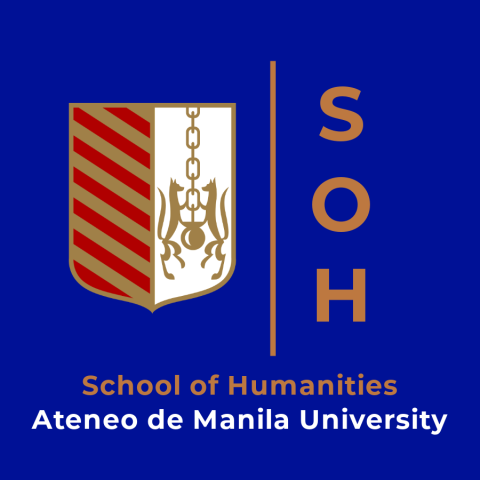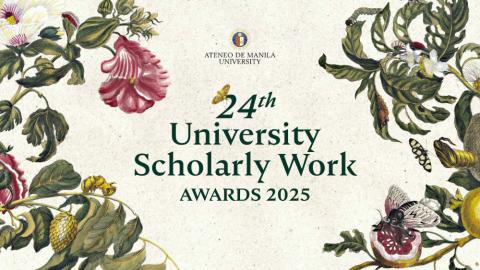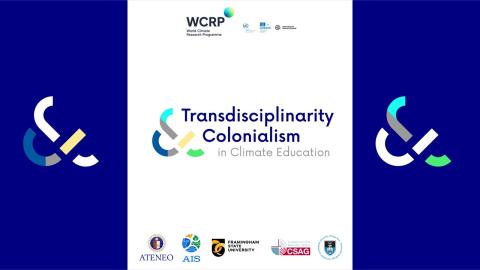Three glimpses at Fr Ferriols
27 Aug 2024 | Leovino Ma Garcia
There are as many Ferriols as there are many persons who admire and love him. This afternoon, I will limit myself to three glimpses of his humanity between 1962 and 1967 when he was “young and full of hope” (he became old but he was still full of hope).
People who do not know Fr Ferriols in 1962 will have to summon their creative imagination to see and believe that Padre went to class actually wearing ankle-length black boots and dark-rimmed glasses (like Woody Allen’s). He did not yet take seriously TS Eliot’s line “I grow old. I grow old. I shall wear my trousers rolled.” Some days, he even looked well-dressed in his newly-pressed immaculate white sutana or habit. At this time, he felt secure without his umbrella (“payong”) and shoulder bag, the time when his Ilocano sounded Greek to me and his Greek Ilocano to me. His fiery temper did not yet become legendary (but when his students sank into dogmatic slumber in his classes, they were rudely awakened by him). Before he became regarded as a walking institution by those who probably can not bear too much of his reality, he was a regular genius (the only “true genius in the Society of Jesus,” according to the late noble historian Horacio de la Costa, (First Provincial of the Philippine Jesuits in 1965). Fr Ferriols smoked heavily (Camel) cigarettes and enjoyed not a few good drinks, like any respectable Jesuit.
Fr Ferriols was always “Totoy” to his mother, Modesta Jamias, Third Order Franciscan (who lived to be 104) and father, Vicente Garcia Ferriols, Third Order Carmelite. His three sisters were all in religious life, Holy Spirit Sisters)—Sister Cyrilda who passed on to eternal life at the age of 85, Sister Cristina Maria (who became Provincial) passed on at the age of 99 and Sr Asuncion Marie (who became a contemplative Pink sister in Bad Driburg, Germany). He was called “Roc” by the late Fr Arevalo in their 1941 High School yearbook. I heard him called “Rocky” by some American Jesuits, “Apo” by those who claim roots in Ilocosvakia and later, “Padre” by his students and “Lolo” by some grandnieces. He was all of these and more.
I talk now about Fr Ferriols as a father/teacher, as a priest, and as a Jesuit. First, as a father/teacher. I first met Fr Ferriols as a 17year-old sophomore at Ateneo; he was 37 at the time. As a Humanities major, he taught me nearly all my philosophy courses—all the four History of Ideas courses (Ancient, Medieval, Modern, and Contemporary), Ontology (of Fr Joseph de Finance), Philosophy of Religion, courses on Gabriel Marcel, Teilhard de Chardin, Kierkegaard, Indian Philosophy, and the Greek classics between the ages of 18 and 20. He fired my imagination, gifted me with the passion for philosophy and inspired me to dedicate my life to philosophy. Like Morrie in Tuesdays with Morrie, he saw me as “a raw but precious thing, a jewel that with wisdom, could be polished to a proud shine.” He believed in me.
He not only taught me but as a father, he fought to create a space for me in Ateneo. Just before graduation in May 1965, Fr Ferriols then Philosophy Department Chair wanted to hire me to teach philosophy. He sought the approval of Fr James F Donelan, S.J., then Dean who disapproved my being hired on the ground I was just too short (I was barely 5 feet tall at the time and Fr Donelan was over six feet tall; Fr Donelan thought I would not be credible before the students). Fr Ferriols didn’t take “no” for an answer. He took his appeal to the Rector-President, Fr Francisco Araneta who also said “no”. Undaunted, Fr Ferriols brought the case to Fr Horacio de la Costa SJ, then newly appointed first Filipino Provincial who gave in (hiring procedures in Ateneo have changed in the meantime).
Let me recount to you another instance when Fr Ferriols struggled to literally reserve a space for me and for my parents. Just after my graduation, my parents and I were returning to Tuguegarao. Fr Ferriols and Fr Jose A Cruz, Rizal’s great grand nephew then teaching philosophy offered to drive us to the Rural Transit bus terminal near the Bonifacio Monument in Caloocan. To reserve seats for us (no airconditioned buses at the time) which was on a first come-first served basis, Fr Ferriols tucked the lower part of his sutana and ran alongside the arriving bus and clambered up the window, head first, legs dangling out. Later, we saw Fr Ferriols and Fr Cruz (in their sutanas) standing on the roof of the bus, arranging and tying our luggage. I will forever remember the two figures silhouetted against the afternoon sky.
Early on, I caught a glimpse of Fr Ferriols’ priestliness. In July 1964, I invited him to visit my family in Tuguegarao. He stayed in the convento with his cousin, the late Mons Ricardo Jamias who was then parish priest; my older brother-priest Quintin was one of his assistants. During his stay, I accompanied Fr Ferriols to give Extreme Unction to a dead child, and then to a dying policeman. After that, he cut short his stay to immediately go on a retreat. He wrote in a letter dated 7 July1964:
“You asked me once why I changed my plans and decided to make my retreat right away. I said I might tell you sometime. Here it is: when I was blessing that dead child, I saw something very clearly. I am simple enough to think that this clear-seeing is from God and I feel I must be alone with Him as soon as possible. Perhaps He has something more to show me; perhaps there is nothing more, perhaps I just have to stand silent before Him. Bonum est praestolari cum silentio salutare Dei. I simply have to look for Him once more in the silence.”
Fr Ferriols was not only a teacher/father, and a priest. He was also a son of Ignatius of Loyola who constantly inspired him to live and become “large-minded, courageous, compassionate, of good judgment, energetic in understanding and in seeing tasks to completion and above all, closely united with God Our Lord and intimate with Him in prayer and all activities.” He was a true Jesuit descendant of a group of companions in the Lord, pioneers of a human adventure that strives to promote the glory of God by exalting the goodness of all creation. To show this, let me read a letter written by him in long hand from the Jesus Nazareno parish on 7 March 1967 (the one year when he didn’t teach in Ateneo):
“I am afraid I will have to ask you again to be patient with my handwriting and I have not been able to borrow a typewriter.
“Last night the world was losing itself in soft, black rain. Now is a rain-washed morning. Dustless, cool, a new birth. Cloudy still, with slight promises of wet. But life comes from the sea. So, still a new birth. Still a fitting time to wish you the best of things as you count twenty-two years on this our exasperating earth which he has prepared for us with his so unexplained and stubborn love.
“Camelot” is playing on the phono. (I wangled the record from Fr Cebrero.) The trumpets and voices are so heavy with past and future, with what I cannot understand, but is true and precious. The truth I thought to forget like the peasants of Yevtushenko,
In wanderings finding fortitude to forget
what each of them loved more than his life.
But it seems it will not be so. I have to look for the fortitude that is without wandering and forgetting.
But your life is still new. May you feel it as new. And when your old years come, may you still be new inside. May you be alive and new as only the old can be. May you never have to try to forget by wandering through mud and rock, beyond cliff and upland, but (to use an old Irish blessing); May the road rise to meet you, may the wind be always at your back and may God ever hold you in the hollow of his hand.”
Maraming salamat po. Dios ti ag-ngina. Thank you everyone!





